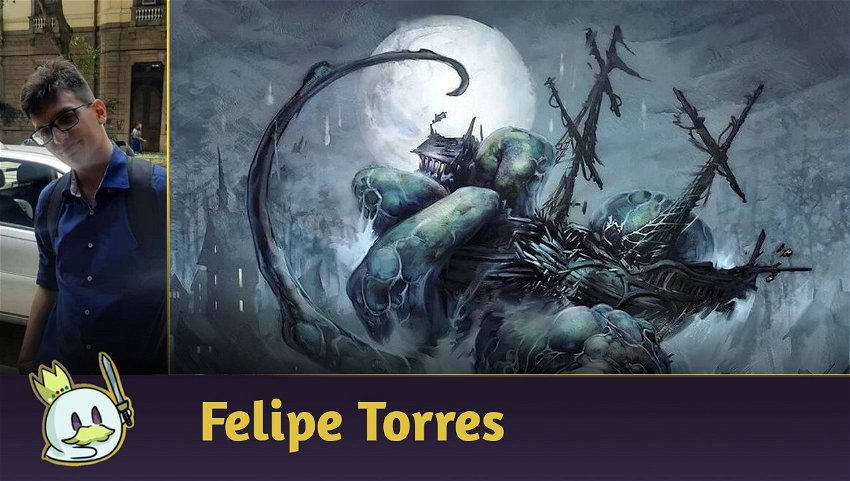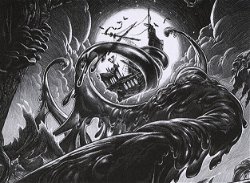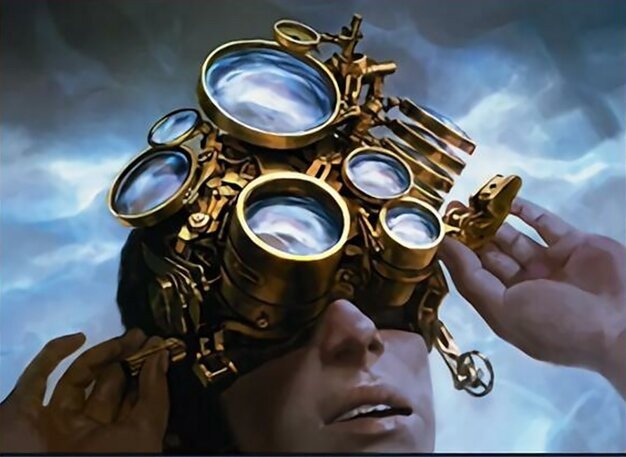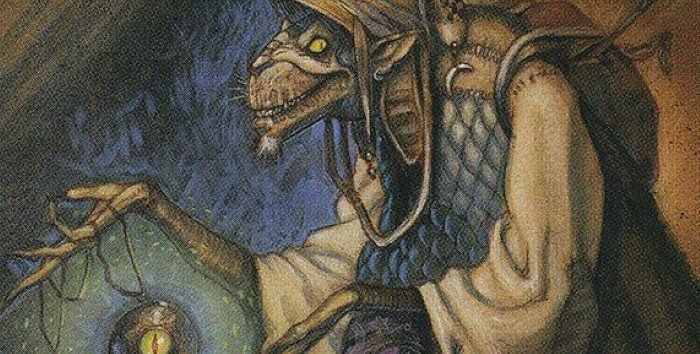Introduction
This list has been put together with some conditions and restrictions.
• The deck must cost up to $100 at the time of deck creation.
• Commander(s) are not included in the final deck value.
• The deck is built to be as strong and consistent as possible given the deck's limitations.
• Basic lands are included in the final value.
• Decks must adhere to Wizards' Banned list
The list that will be presented falls under the Combo Archetype and was created by me, being developed to operate against other decks that are in the same price range.
Ad
The List
The Commander

At first, we will look at Slogurk. He has a great ability to take value from anything that drops lands to the Graveyard, such as fetch lands and cycling, and can return 3 of them to your hand to protect itself. The commander also works as a Life from the Loam for 3 mana (since the commander must be cast).
Gameplan
The deck's idea is pretty clear: generate value while growing the board to win with some of the deck's combo lines.
Normally, in early turns, you will ramp up to secure extra mana for later turns. It's not a problem to drop the commander on turn 3, so you can drop the dorks on the early turns to have more mana available.
With Slogurk in the field, you start using your fetchs and cycle lands to generate value. Much of the deck has been set up to make the deck's victory lines more consistent. Therefore, even without direct synergy with the commander, some lines were determined to be more efficient than interactions with the commander.
Winning Games
This deck has some very malleable winconditions, it will be up to you, piloting the deck, to define which is the most resilient and easy to reach line to win the game.
Infinite turns with Slogurk
This line has the advantage of already having one of the pieces always available, since your commander is one of the pieces, in this line your goal is to have at least 3 islands and at least 6 mana available to start.
Combo parts

Loop Conditions: Slogurk, the Overslime and Azusa, Lost but Seeking on the battlefield, and Walk the Aeons on the hand. The 3 Islands can be in the field, in the hand or in the graveyard, but if they are in the graveyard, Slogurk must have at least 3 counters, and you'll need 3 more mana, plus you'll need at least 6 mana available.
How it works:
1. You cast Walk the Aeons, paying its buyback cost.
2. Slogurk gets three counters for this, you activate his second ability and remove the counters, putting him into your hand.
3. This activates his third ability, returning 3 islands to your hand.
4. Using Azusa's effect, play the three islands
5. Cast Slogurk from your hand.
6. Repeat from step one.
This will give you infinite turns, but this consumes a lot of mana for the turn, a total of nine mana. So, to make sure you can do more than just repeating the loop, you need to have more dorks or lands on the battlefield, so you can protect yourself and play more threats.
Infinite Mana with Peregrine Drake
This line is very flexible and depends on some parts to be executed, which can change according to what you have.
The idea is to generate multiple Peregrine Drake ETBs to generate infinite mana and use this mana to win the game, or by drawing the entire deck and casting Laboratory Maniac.
To generate multiple ETBs, you can use Deadeye Navigator or Eternal Witness/Timeless Witness plus Ghostly Flicker.
Ad
To use this mana to win the game, you can use Spectral Sailor, Prophet of Distortion, Mulldrifiter and Diviner's Portent to draw your deck and cast the Laboratory Maniac.
Loop Condition: Peregrine Drake and Deadeye Navigator or Witness + Flicker, plus enough mana sync in hand to cast them.
How it works:
Drake + Navigator
1. Cast Peregrine Drake, untapping 5 lands.
2. Cast the Deadeye Navigator.
3. With Navigator's Soulbond, bond it to Drake.
4. Use Navigator's ability to Blink him and Drake, tap all the mana for this, generating ETB from both and mana in the pool.
5. Untap 5 lands with Drake's ETB, and bond Navigator to it.
Repeat steps 4 and 5 as many times as necessary, until your opponents concede, and then go to the sink line.
Ghostly + Witness
1. Cast Peregrine Drake, untapping 5 lands.
2. Use Ghostly Flicker on Drake and another target of your choice (a land or something that generates value for you).
3. Cast the Witness, targeting Flicker in the Graveyard,
4. Now with Flicker in hand, cast it, targeting Drake and Witness.
5. Tap all of your untapped land, generating mana in the pool.
6. With Flicker resolving, untap the 5 lands and target Flicker in the Graveyard.
Repeat steps 4 through 6 until you generate the amount of mana you want.
Once you have infinite mana, spend your mana on Prophet of Distortion/Spectral Sailor until you have all the cards in your deck in your hand, cast Laboratory Maniac and draw a card again to win.
You can also use Blue Sun's Zenith/Divine's Portent, if you have any of them, to draw your entire deck at once, cast Lab Maniac, and draw more cards.
If you have Mulldrifter, you can cast it for its normal cost, and use Witness + Flicker or Navigator to generate ETBs from it until you draw Lab Maniac to win the game.
Analyzing the deck's packages
To make the explanation easier, I separated the deck's cards into different packs, having different sizes that were defined according to the deck's needs; some cards fit into more than one pack, and I'll talk about them below.
The packages are: Ramps, Tutors, Card Advantage, Cantrips and Interactions.
Ramp

This list was built thinking about acceleration pieces that can be played before the commander, but they are not intended to accelerate him, but to build the board; since the deck's wincons need mana, it's important to make the most of these early turns to build that mana advantage.
I chose to maximize the number of dorks on the deck precisely because the deck uses Birthing Pod and Prime Speaker Vannifar. It's essential to have how to start the Pod lines, and for that, the deck has this number of dorks because in addition to ensuring more mana in turns, they can also be the first step to find your winconditions.
Ad
On top of that, this list also features ramps that puts lands onto the battlefield to synergize with the commander and search for islands for the deck's infinite turns combo.
Tutors

This package is built with different types of tutors that are useful in different situations: tutors for creatures, instants and sorceries, specific CMC tutor, lands tutor (used to fix mana).
One of the biggest problems in these colors is the lack of tutors for instants and sorceries that fit the budget, in addition to the fact that there are no tutors for cards without some kind of restriction, so I kept winning options in the deck that involve creatures, increasing consistency.
Mystical Tutor, Merchant Scroll and Solve the Equation find instants and sorceries. Meanwhile, on the other side we have Birthing Pod, Prime Speaker Vannifar, Fauna Shaman, Magus of the Order, Eldritch Evolution, Fauna Shaman and Neoform to find different creatures.
Card Advantage

In my tests, in this price range, the number of creatures used to generate mana is higher than in more expensive lists (this list is an example as it prioritizes this kind of ramp as well). In a budget metagame, cards like Verity Circle have a high potential to generate card advantage, and still make your opponents think twice before tapping their creatures to something other than attacking.
Tatyova, Benthic Druid and Ghostly Pilferer have a lot of potential on the list, as the deck likes to play lands, and generating more value from it is important. Pilferer is great at being able to secure draws in many ways.
Prophet of Distortion and Spectral Sailor can make you draw cards over time, Eureka Moment generates card advantage while allowing you to make more land drops, Blue Sun's Zenith and Diviner's Portent allows you to draw as many cards as you want as an instant.
The list also has cards that replace themselves in your hand having some useful effect along with them, such as Keep Safe, Blink of an Eye, Into the Roil and Kenrith's Transformation which function as removals and interactions, and Growth Spiral which functions as a ramp.
Cantrips

When you put several cards with the same function, even though your deck has 99 cards, you can get a small amount of mana to look at many cards, and that without losing the number of cards in hand.
Ad
Also, as the commander works as a Life from the Loam in the command zone, you can draw cards and keep the lands in your hand, as cycling lands can come back into your hand with its ability.
Frantic Search manages to dig a little on your opponents' turn and even untap lands, costing virtually zero mana.
Interactions

This deck's interactions are not designed to control opponents, but to protect yourself.
Using them only to deal with something hinders you as you try to win, they try to make the relationship between mana cost and total value in the deck, thus avoiding very high mana costs and high price tags.
Bounces and other removals serve to remove threats on the winning turn, while counterspells serve to ensure that your spells will resolve.
For example, Siren Stormtamer and Keep Safe are only good for protection, Dispell, Spell Pierce and Stubborn Denial are the 1 mana counters, Counterspell, Mana Leak, and Muddle the Mixture are CMC 2's that are more comprehensive or have other functions.
Strengths & Weaknesses
Strengths
The list is very resilient and doesn't lose too much speed for that, with good balance between the packages, allowing for a greater consistency.
The deck initially deceives opponents, as the commander does not appear to be threatening.
Its winconditions use generally good cards, with only one deck slot entirely dedicated to winning (Laboratory Maniac).
The ability to resume the deck's loops is absurd, as it has redundancies, meaning that even when stopped you can resume the deck's victory lines by other means.
The list manages to take a lot of advantage of its opponents' openings, at this price tag you probably won't be the first one trying to win, but the first one is usually stopped, and Slogurk manages to win over the others.
The deck can play around a few stax pieces, this clearly depends on what kind of stax, but overall, it can handle some cards.
Weaknesses
The list forgoes interactions with opponents to try to maintain its speed and consistency.
The deck's loops are easy to interact with, and the deck doesn't have redundancy for some pieces; they can be retrieved from the graveyard, but they don't have anything exceptional to defend against. If you try to win when your opponents have too many open resources, you will likely be stopped.
The Infinite Turn Line is not as consistent due to the lack of tutors for sorceries and is too restricted for protection, if you try to win too early, you might run out of mana for protection.
Conclusion
I end this article here, stay tuned that soon we will have another budget cEDH, to demystify this idea that every cEDH deck is more expensive than a car!










— Comentarios0
Diventa il primo a commentare